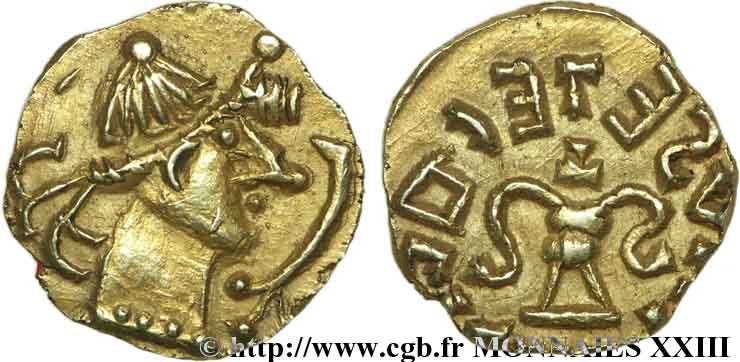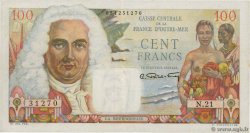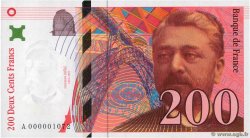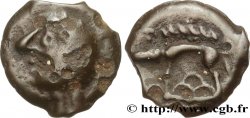v23_0916 - MONETE DELLO MEROVINGI - BANASSAC (BANNACIACO) - Lozere Triens, monétaire ELAFIVS
MONNAIES 23 (2004)
起拍价 : 2 000.00 €
估价 : 3 500.00 €
竞价记录 : 4 000.00 €
出价数量 : 9
最高出价 : 4 000.00 €
起拍价 : 2 000.00 €
估价 : 3 500.00 €
竞价记录 : 4 000.00 €
出价数量 : 9
最高出价 : 4 000.00 €
种类 Triens, monétaire ELAFIVS
日期: (VIIe siècle)
铸币厂名称/城市 Banassac
材质 gold
直径 12 mm
模子方针 9 h.
重量 1,09 g.
稀少度 R3
关于品相的说明
Belle monnaie, avec une frappe vigoureuse. Droit particulièrement bien centré, mais revers sur flan court
出版目录中的项代码 :
家谱
Cet exemplaire aurait été acheté en avril 1941. Il provient de la collection Ponton d’Amécourt
正面
正面的文字 ANÉPIGRAPHE.
正面的说明书 Tête barbare diadémée, à droite ; diadème très saillant à la tranche perlée ; calotte et bouton occipital ; devant le profil, rameau renversé à trois baies.
背面
背面的文字 [...]VS ET EIAC[...] RÉTROGRADE.
背面的说明书 Calice à deux anses, supportant un T renversé.
评论
Ce triens est celui qui illustre le Belfort, n° 668. La plupart des autres exemplaires ont la légende ELAFIVS MONETA. Le sens de notre légende de revers ne semble pas avoir été compris.
La description du Belfort donne la légende décomposée en ...VS ET EIAT... ; il pourrait s’agir d’une association de deux monétaires, dont ELAFIVS ? Dans la série de triens du Belfort, seul celui-ci a la légende du revers rétrograde. Si seules les lettres étaient rétrogrades, et non le sens de lecture, la légende ...CALETESV... pourrait laisser un doute sur l’attribution au monétaire ELAFIVS. Certains triens avec le nom de monétaire au revers ont la légende BAN à l’exergue, pour BANASSAC.
This triens is the one that illustrates the Belfort, No. 668. Most of the other examples have the legend ELAFIVS MONETA. The meaning of our reverse legend does not seem to have been understood. The description of the Belfort gives the legend broken down into ...VS ET EIAT...; it could be an association of two coins, including ELAFIVS? In the series of Belfort triens, only this one has the reverse legend retrograde. If only the letters were retrograde, and not the reading direction, the legend ...CALETESV... could leave a doubt about the attribution to the coin ELAFIVS. Some triens with the name of coin on the reverse have the legend BAN in the exergue, for BANASSAC
La description du Belfort donne la légende décomposée en ...VS ET EIAT... ; il pourrait s’agir d’une association de deux monétaires, dont ELAFIVS ? Dans la série de triens du Belfort, seul celui-ci a la légende du revers rétrograde. Si seules les lettres étaient rétrogrades, et non le sens de lecture, la légende ...CALETESV... pourrait laisser un doute sur l’attribution au monétaire ELAFIVS. Certains triens avec le nom de monétaire au revers ont la légende BAN à l’exergue, pour BANASSAC.
This triens is the one that illustrates the Belfort, No. 668. Most of the other examples have the legend ELAFIVS MONETA. The meaning of our reverse legend does not seem to have been understood. The description of the Belfort gives the legend broken down into ...VS ET EIAT...; it could be an association of two coins, including ELAFIVS? In the series of Belfort triens, only this one has the reverse legend retrograde. If only the letters were retrograde, and not the reading direction, the legend ...CALETESV... could leave a doubt about the attribution to the coin ELAFIVS. Some triens with the name of coin on the reverse have the legend BAN in the exergue, for BANASSAC








 对产品描述纠错
对产品描述纠错 打印
打印 分享我的选择
分享我的选择 提问
提问 Consign / sell
Consign / sell
 产品介绍
产品介绍











